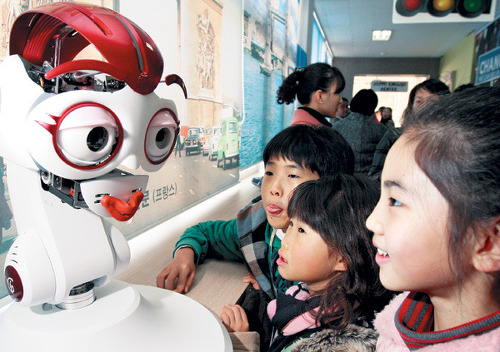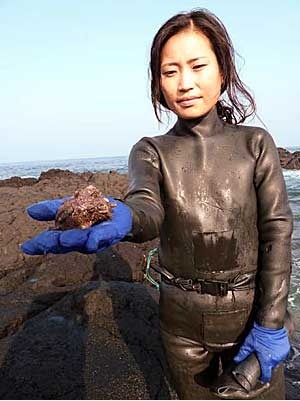Where to Apply:
South Korea Embassy
4 Madani Avnue
Baridhara, Dhaka
Phone: 8802 881 2088-90
Fax : 8802 882 3871
Email : embdhaka@embdhaka.org
Visa Fees:
For Student Visa, you have to pay $US50.
The Following Documents are Required:
1. Passport valid for at least 6 months
2. Completed application form
3. One recent passport-size color photo.
4. Letter of Acceptance from the college, confirming you have been accepted and enrolled on a course of full-time education
5. All educational certificates
6. Letter from college confirming payment of course fees documents (if required).
7. Complete Bank Statement.
8. If your sponsors is staying in South Korea then you have to submit: Letter of sponsorship with documents received from the sponsor in South Korea.
The Degrees are
1. Associate Degree
2. Bachelor's Degree
3. Master's Degree
4. Doctoral Degree
Semester Offer
Most universities offer two semesters in one academic year.
1. Spring: From beginning of March to middle of June.
2. Fall: From beginning of September to middle of December.
Requirements for Bachelor's Program
A. Academic
1. At least 12 years of education (HSC equivalent).
B. Language Proficiency
1. If the medium of instruction of your target university is English then:
a. Required TOEFL iBT score 79 to 80 or
b. IELTS 6.0 or more or
2. If the medium of instruction of your target university is Korean:
a. Required Test of Proficiency In Korean (TOPIK) Test.
For more information you can contact The Institute of Modern Languages of Dhaka University.
C. Course Length
1. Bachelor's Degree: Normally requires 4 years of full-time study.
Requirements for Master's Program
A. Academic
1. You must have had 16 years of education.
B. Language Proficiency
1. If the medium of instruction of your target university is English then:
a. Required TOEFL iBT score 79 to 80 or
b. IELTS 6.0 or more or
2. If the medium of instruction of your target university is Korean:
a. Required Test of Proficiency In Korean (TOPIK) Test.
For more information you can contact The Institute of Modern Languages of Dhaka University.
C. Course Length
1. Master's Degree: Normally requires 2 years of full-time study.
2. Doctoral Degree: Normally requires 2 to 3 years of full-time study.
Subjects for Bachelor's & Master's Program
Korean Language and Literature, History, Philosophy, English, Law, School of Social Sciences, Political Science, Public Administration, Sociology, Economics, Journalism and Communication, BBA, Accounting, Health Service Management, e-Business, Convention Industry, Food Service Management, Culinary Science and Arts, Hotel Management, Tourism Management, Mathematics, Physics, Chemistry, Biology, Geography, Information Display, Food & Nutrition, Human Ecology, Child & Family Studies, Housing / Interior Design, Clothing / Textiles, Design Craft, Theater & Film, Creative Writing, Electronic Materials Engineering, Computer Engineering, Ceramics Engineering, Human Ecology, Culinary Science, Medicine, Oriental Medicine, Dentistry, Pharmaceutical Science, Oriental Pharmaceutical Science, School of Nursing Science, RN / BSN Programs, Instrumental Music, Composition, Voice, Fine Arts, Korean Painting, Drawing and Painting, Sculpture, Dance, Korean Dancing, Modern Dancing, Ballet, General Education etc.
Expenses
A. Tuition Fees in $US
1. It depends on National Universities & Private Universities.
2. The average tuition fee is $US4,000 to $US10,000 for 1 year.
B. Living & Other Expense in $US
1. Food cost: Around $US300 for 1 month.
2. Accommodation cost (Living Separately): Around $US300 for 1 month.
3. Dormitory fee: 4 people, one room, around $US400 to $US900 for 1 semester (This fee includes food cost.)
How to Apply to The University
1. Check with the departments to see if there is a closing date for your application.
2. You should write directly to the Institution's Admission Office for detailed application information and forms.
3. You can also download application form from university website.
4. Some universities have an on-line application facility.
5. Admission Office will inform you about the documentation, translation, and visa requirements.
5. You should start at least one year in advance to compile the necessary information and documentation.
6. The decision of the institution is usually announced within approximately six to eight months of the application deadline.
Supporting Documents
1. Completed Application Form
2. Official English version of all educational documents including marks sheets.
3. A letter of acceptance issued by school.
4. School/College leaving certificate.
5. One or more letters of recommendation.
6. Certificate of English or Korean Language Proficiency Test score.
7. Photocopy of your passport.
Other Information
A. Medical Insurance
Medical insurance: Around $US20 to $US30 for 1 month.
B. Working in South Korea
1. According to the rule, after one semester has been completed, foreign students are allowed to work until 20 hours per week, and during semester break, they can work freely or without restrictions.
2. Foreign students should not prioritize their part-time job over their studies.
C. Jobs in South Korea
Students could get a part-time job in the following places: school restaurants, stores, companies, campus snack bars, bookstores, school offices or laboratories.
D. Credit Transfer Facility
1. Students may apply for credit transfer program at undergraduate or postgraduate level in South Korea.
2. The maximum amount of credit that may be granted normally is not greater than 50% of the course.
3. Most of the South Korean universities consider minimum "B" grade for acceptance.
4. You have to submit the following documents to your target university:
a. Your application form for the Undergraduate or Postgraduate coursework program.
b. Official copies of your academic transcript.
c. Also include an official letter from head of the school/department of your university, from where you have already completed the courses.
d. Detailed course outlines (Official Copy) including subject descriptions, methods of teaching and assessment, reading lists, number of hours of teaching etc.
e. The academic level you are studying (e.g. First Year, Second Year etc.).
f. How many credits you have completed.
g. An explanation of the grading system used at your institution.
h. Information on the total units of study requirement ( i.e. how many credits are required) for the completion of the degree.
E. Scholarships
1. Korean Government Scholarship Program
2. Korean Government IT Scholarship Program
3. Global IT Policy & Technology Scholarship



















 The LA Times article contains an interview of the youngest haenyeo, Ms. Jae-Yeon Kim, who is 33 years old. Ms. Kim says she learns to become a haenyeo not to make money but because it connects her to her ancestors. She must learn all there is to learn about sea-diving before the elder haenyeos pass away so that sometime in the future she will be able to pass down the skills and the know-how.
The LA Times article contains an interview of the youngest haenyeo, Ms. Jae-Yeon Kim, who is 33 years old. Ms. Kim says she learns to become a haenyeo not to make money but because it connects her to her ancestors. She must learn all there is to learn about sea-diving before the elder haenyeos pass away so that sometime in the future she will be able to pass down the skills and the know-how.